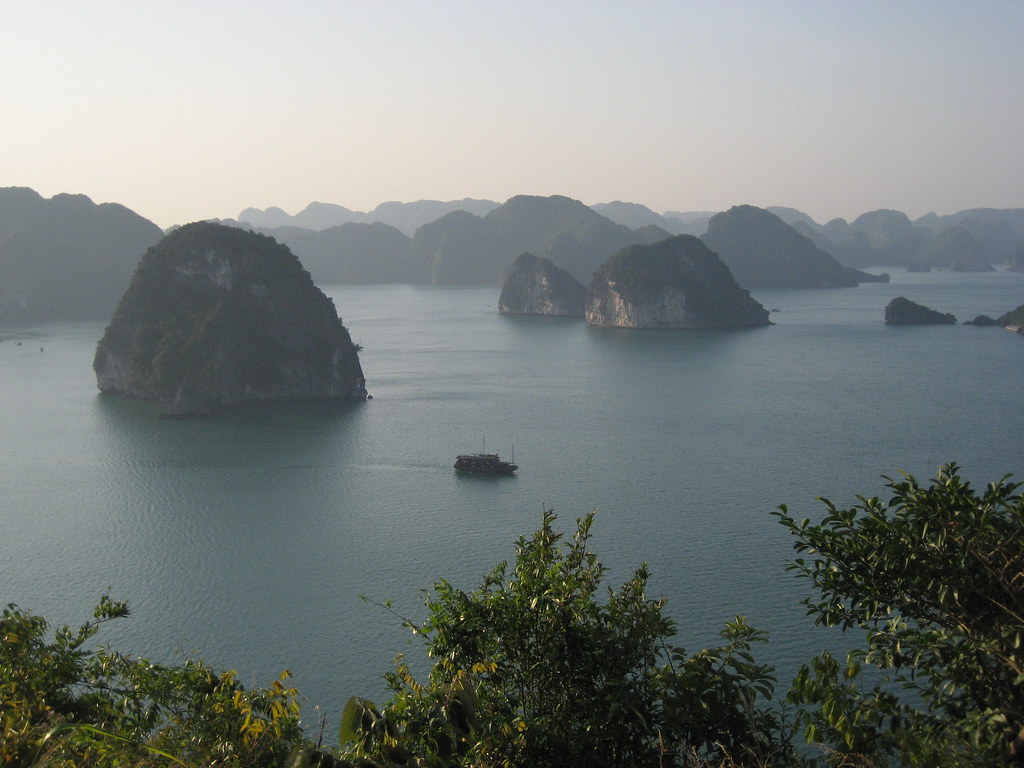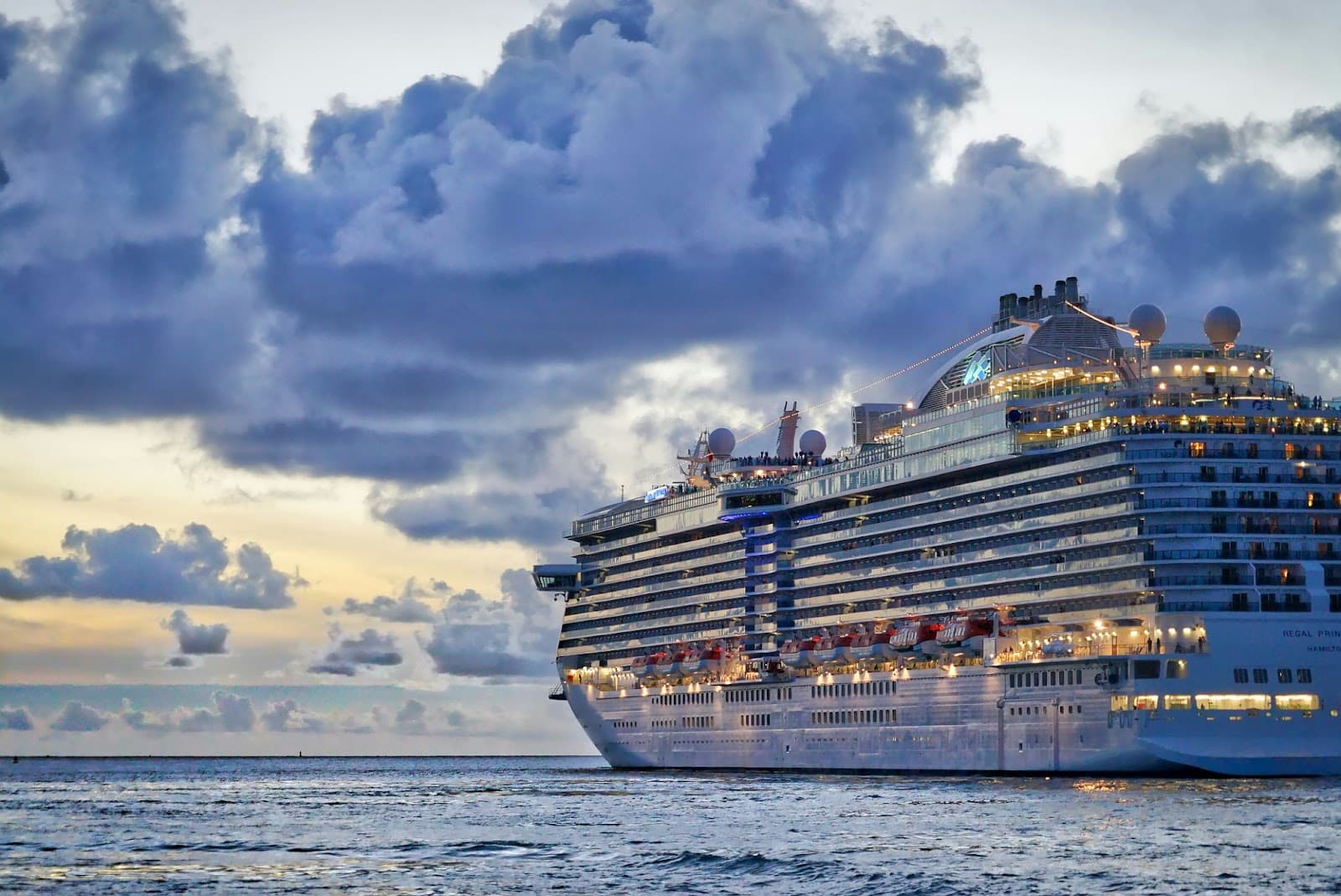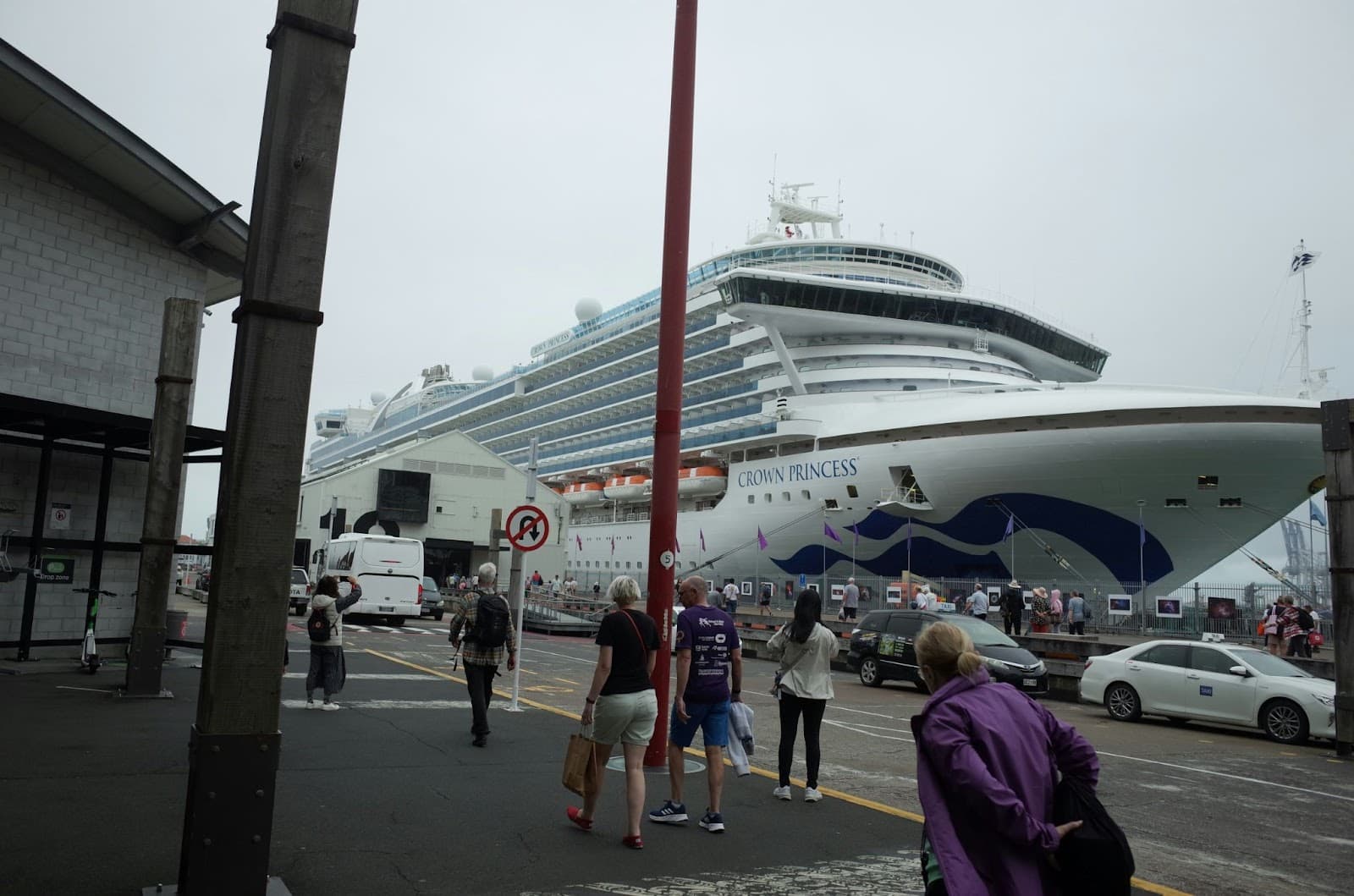When envisioning an island, one often conjures images of paradisiacal landscapes teeming with life. But what about clusters of these islands, forming a tapestry of biodiversity? Archipelago islands, tightly knit groups scattered across oceans, lakes, and rivers, offer a realm of exploration and ecological marvels. This article delves into the essence of archipelagos, their formation, biodiversity, and the looming threats they face.
What are Archipelago Islands?
Archipelago islands are essentially collections of landmasses, typically islands but also including smaller islets and rocks, that are geographically close to one another and surrounded by bodies of water such as oceans, seas, lakes, or rivers. They are distinct from singular islands in that they form interconnected clusters, often with a shared geological history, cultural heritage, and ecological dynamics:
- These island groups can vary greatly in size and shape, from small chains comprising just a few islands to vast archipelagos containing hundreds or even thousands of individual landmasses. Examples of well-known archipelagos include the Hawaiian Islands, the Philippines, the Galapagos Islands, and the Indonesian Archipelago;
- One defining characteristic of archipelago islands is their geographic proximity, which often results in shared environmental conditions and ecological interactions among the islands within the cluster. This proximity can lead to similarities in flora and fauna among the islands, as well as the development of unique species adapted to the specific conditions of the archipelago;
- Archipelagos can form through various geological processes, including volcanic activity, tectonic movements, and changes in sea levels. For example, volcanic archipelagos like Hawaii are formed by the accumulation of volcanic eruptions over millions of years, resulting in the emergence of new islands from underwater volcanic vents. In contrast, archipelagos like those found in Southeast Asia may be remnants of ancient land bridges or fragmented continental shelves;
- Culturally, archipelago islands often share historical connections and may have been inhabited or explored by common indigenous peoples or colonial powers. This shared history can manifest in similar languages, traditions, and societal structures among the islands within the archipelago;
- Ecologically, archipelagos are recognized for their biodiversity, as they often provide diverse habitats ranging from coastal ecosystems to mountainous interiors. The isolation of archipelago islands can also result in the evolution of endemic species found nowhere else on Earth, making them of particular interest to biologists and conservationists.
Overall, archipelago islands represent complex and dynamic ecosystems shaped by geological processes, cultural interactions, and ecological relationships. They serve as both natural laboratories for scientific research and as cultural treasures that inspire awe and appreciation for the diversity of life on our planet.
The Formation of Archipelago Islands
The formation of archipelago islands is a fascinating process shaped by various geological phenomena over millions of years. These island clusters can arise through several mechanisms, each contributing to their unique characteristics and landscapes.
- Volcanic Eruptions. Many archipelagos, such as the Hawaiian Islands, are born from volcanic activity. Underwater volcanic eruptions occur along tectonic plate boundaries or hotspots, where magma rises from the Earth’s mantle. As lava cools and solidifies, it forms new landmasses that accumulate over time, eventually emerging above sea level as islands. The continuous activity of these hotspots can result in island chains stretching across vast distances, with each island representing a stage in the volcanic process;
- Rising Sea Levels. Changes in sea levels, often associated with periods of glaciation and deglaciation, can shape archipelagos. During ice ages, water is locked up in glaciers, leading to lower sea levels and the exposure of land bridges connecting islands or linking them to the mainland. As the climate warms and glaciers melt, sea levels rise, submerging low-lying areas and creating fragmented archipelagos. This process is evident in regions like Southeast Asia, where rising seas inundated land bridges, forming the scattered islands of Indonesia and the Philippines;
- Tectonic Movements. Archipelagos can also form as a result of tectonic movements, including the shifting of continental plates and the collision or separation of landmasses. When continental plates converge, they may uplift portions of the ocean floor, leading to the formation of island arcs or chains. Conversely, when plates diverge, rift valleys can develop, allowing magma to reach the surface and create new islands. The Aleutian Islands in Alaska and the Japanese Archipelago are examples of archipelagos formed by tectonic processes along convergent plate boundaries;
- Post-Glacial Rebound. In regions once covered by thick ice sheets during the last ice age, such as Scandinavia and North America, the melting of glaciers has led to a phenomenon known as post-glacial rebound. As the weight of ice is removed, the Earth’s crust gradually rises in response, causing land to emerge from beneath the retreating ice. This rebound can result in the formation of new islands as previously submerged land surfaces are exposed, contributing to the expansion of archipelagos like those found in the Baltic Sea region.
These processes demonstrate the dynamic nature of archipelago formation, driven by the interplay of geological forces, climatic changes, and environmental factors. The resulting island clusters represent not only geological marvels but also unique ecosystems shaped by their turbulent origins. Understanding the formation of archipelago islands provides insight into the Earth’s geological history and the complex interactions that shape our planet’s landscapes.
Biodiversity of Archipelago Islands
Archipelago islands, with their unique geographical settings and isolation, foster a remarkable array of biodiversity, making them ecological hotspots of global significance. Here, we explore the diverse ecosystems and endemic species that thrive within these island clusters.
- Island Isolation and Endemism. The isolation of archipelago islands, often far removed from mainland landmasses, has led to the evolution of distinct ecosystems and the emergence of endemic species found nowhere else on Earth. Limited gene flow and unique environmental conditions have driven speciation, resulting in a rich tapestry of life adapted to island habitats;
- Species Adaptations and Niches. Archipelago islands offer a diverse range of habitats, from lush rainforests to arid coastal plains, each supporting specialized flora and fauna. Species inhabiting these islands have adapted to exploit specific niches, leading to a high level of ecological diversity. For example, some species may have evolved unique feeding strategies, reproductive behaviors, or physical characteristics to thrive in their island environments;
- Endemic Flora and Fauna. Endemism is particularly pronounced in archipelago islands, where species have evolved in isolation over millennia. These islands are often home to a wealth of endemic plant species, including rare orchids, palms, and ferns adapted to the island’s microclimates. Similarly, endemic animal species, such as birds, reptiles, and mammals, abound in archipelago ecosystems, showcasing remarkable adaptations to island life;
- Conservation Challenges and Efforts. Despite their ecological significance, archipelago islands face numerous conservation challenges, including habitat loss, invasive species, and climate change. Human activities, such as deforestation, urbanization, and overexploitation of natural resources, threaten fragile island ecosystems and the species they support.
Conservation efforts are underway to protect the biodiversity of archipelago islands, including the establishment of protected areas, species recovery programs, and community-based conservation initiatives. Collaboration between governments, scientists, local communities, and conservation organizations is essential to safeguarding the unique biodiversity of these island ecosystems for future generations.
Archipelago islands represent invaluable repositories of biodiversity, where unique species and ecosystems flourish in isolation. By understanding and conserving the biodiversity of these island clusters, we can protect not only the natural heritage of archipelago ecosystems but also the ecological services they provide to the planet. As stewards of these fragile environments, it is our responsibility to ensure the long-term survival of archipelago biodiversity for the benefit of all life on Earth.
Threats to Archipelago Islands and Their Diversity
Archipelago islands, with their delicate ecosystems and unique biodiversity, face a multitude of threats, both natural and anthropogenic. Understanding these threats is crucial for implementing effective conservation measures to safeguard the ecological integrity of these island clusters.
- Habitat Loss and Degradation. Human activities, including urbanization, agriculture, and infrastructure development, have led to widespread habitat loss and degradation on archipelago islands. Deforestation, land conversion, and coastal reclamation disrupt native ecosystems, fragment habitats, and threaten the survival of endemic species;
- Invasive Species. The introduction of non-native species poses a significant threat to the native flora and fauna of archipelago islands. Invasive species, such as rats, cats, and invasive plants, outcompete native species for resources, prey on native wildlife, and disrupt ecological balances, leading to population declines and extinctions;
- Climate Change. The impacts of climate change, including rising temperatures, sea level rise, and extreme weather events, pose serious threats to archipelago islands and their biodiversity. Coastal erosion, saltwater intrusion, and coral bleaching degrade habitats, while shifting climate patterns disrupt species distributions and migration routes, increasing vulnerability to extinction;
- Overexploitation of Natural Resources. Overexploitation of natural resources, including overfishing, illegal logging, and unsustainable hunting, threatens the ecological balance of archipelago ecosystems. Unsustainable practices deplete fish stocks, degrade forest habitats, and disrupt food webs, leading to cascading impacts on biodiversity and ecosystem functioning;
- Pollution. Pollution, including plastic debris, chemical contaminants, and marine debris, poses a significant threat to the health of archipelago ecosystems. Pollution from land-based sources, shipping, and tourism activities degrades water quality, damages coral reefs, and harms marine life, threatening the survival of species and ecosystems;
- Tourism Pressure. The rapid growth of tourism in archipelago destinations brings increased pressure on fragile ecosystems and biodiversity. Unregulated tourism development, overcrowding, and recreational activities can degrade habitats, disturb wildlife, and contribute to habitat destruction, impacting the long-term sustainability of island ecosystems.
Addressing the threats facing archipelago islands and their biodiversity requires coordinated conservation efforts at local, regional, and global scales. Conservation strategies may include:
- Establishing protected areas and marine reserves to conserve critical habitats and species;
- Implementing invasive species management programs to control and eradicate invasive species;
- Promoting sustainable land use practices and eco-friendly tourism initiatives to minimize habitat degradation and environmental impact;
- Enhancing public awareness and education on the importance of conserving archipelago biodiversity and ecosystems;
- Strengthening legislation and enforcement mechanisms to regulate resource exploitation and pollution.
By addressing these threats and implementing conservation measures, we can work towards preserving the ecological integrity and biodiversity of archipelago islands for future generations. Protecting these unique island ecosystems is not only essential for biodiversity conservation but also for maintaining the resilience and sustainability of our planet’s natural heritage.
Conclusion
Archipelago islands stand as testament to Earth’s geological and ecological intricacies, weaving tales of biodiversity and natural wonder. From their formation through volcanic forces to their role as sanctuaries for unique life forms, archipelagos epitomize the marvels of nature. However, as human activities encroach upon these fragile ecosystems, concerted efforts are imperative to safeguard their biodiversity and ensure their preservation for generations to come.
FAQs
The Malay Archipelago, spanning over 25,000 islands, stands as Earth’s largest archipelago, encompassing diverse nations across 1,110,000 square miles.
Seychelles, estimated to have formed around 75 million years ago, ranks among the oldest archipelagos, tracing its origins to the breakup of Gondwana.
While an island is a solitary landmass surrounded by water, an archipelago denotes a cluster of islands in close proximity to each other, fostering interconnected ecosystems.
Iconic archipelagos such as the Caribbean islands, the Maldives, Greece’s island chains, and the Cook Islands allure travelers with their scenic beauty and ecological diversity.



